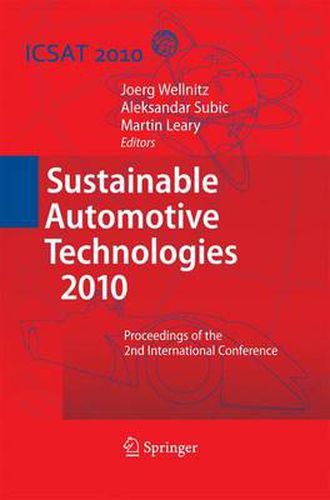Readings Newsletter
Become a Readings Member to make your shopping experience even easier.
Sign in or sign up for free!
You’re not far away from qualifying for FREE standard shipping within Australia
You’ve qualified for FREE standard shipping within Australia
The cart is loading…






This title is printed to order. This book may have been self-published. If so, we cannot guarantee the quality of the content. In the main most books will have gone through the editing process however some may not. We therefore suggest that you be aware of this before ordering this book. If in doubt check either the author or publisher’s details as we are unable to accept any returns unless they are faulty. Please contact us if you have any questions.
Mobility is an essential part of our lives. The ability to move freely is central to meeting our social and economic needs. For this reason we have embraced the car over the past century perhaps more than any other technology or consumer pr- uct. Today there are around 900 million vehicles on the world"s roads with another 60,000,000 new vehicles produced each year worldwide. The scale of the auto- tive industry is significant and far reaching. For example, it is estimated that around two thirds of world"s oil output goes to transportation whereby road - hicles alone consume around 40% of the world"s rubber and 25% of the world"s glass, with the consumption of raw materials and other resources further growing due to the rapid development of the automotive sector in China, India, Thailand and Mexico. Transportation accounts for around 25% of greenhouse emissions worldwide, whereby 90% of transport related emissions come from road vehicles, predominantly cars. Clearly, current levels of consumption and emissions are - sustainable. This in turn suggests that mobility as we know it, based on the tra- tional vehicle technology and existing production and consumer practices, is - sustainable. The challenge of developing new sustainable approaches to mobility confronts industries and our societies in general. The concept of sustainable mobility is m- tidimensional and the challenge of achieving it is quite complex.
$9.00 standard shipping within Australia
FREE standard shipping within Australia for orders over $100.00
Express & International shipping calculated at checkout
This title is printed to order. This book may have been self-published. If so, we cannot guarantee the quality of the content. In the main most books will have gone through the editing process however some may not. We therefore suggest that you be aware of this before ordering this book. If in doubt check either the author or publisher’s details as we are unable to accept any returns unless they are faulty. Please contact us if you have any questions.
Mobility is an essential part of our lives. The ability to move freely is central to meeting our social and economic needs. For this reason we have embraced the car over the past century perhaps more than any other technology or consumer pr- uct. Today there are around 900 million vehicles on the world"s roads with another 60,000,000 new vehicles produced each year worldwide. The scale of the auto- tive industry is significant and far reaching. For example, it is estimated that around two thirds of world"s oil output goes to transportation whereby road - hicles alone consume around 40% of the world"s rubber and 25% of the world"s glass, with the consumption of raw materials and other resources further growing due to the rapid development of the automotive sector in China, India, Thailand and Mexico. Transportation accounts for around 25% of greenhouse emissions worldwide, whereby 90% of transport related emissions come from road vehicles, predominantly cars. Clearly, current levels of consumption and emissions are - sustainable. This in turn suggests that mobility as we know it, based on the tra- tional vehicle technology and existing production and consumer practices, is - sustainable. The challenge of developing new sustainable approaches to mobility confronts industries and our societies in general. The concept of sustainable mobility is m- tidimensional and the challenge of achieving it is quite complex.